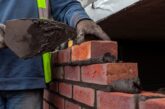
Changes in legislation look set to have an impact on wood and how it’s used as a landscaping material. Kirstie Cooper, Marketing Manager at Bond It explains more.
Few landscaping materials have been used for longer or more extensively than wood. Its enduring popularity and widespread appeal owe much to wood being readily available, immensely versatile and easy to work with.
In addition, being organic, wood complements and sits well within an outside and natural environment like a garden. But this organic nature means wood is susceptible to damage by a variety of equally natural forces including insect attack, fungal rot and decay.
Traditionally, wood and timber preservatives and treatments have been employed to combat these threats, but these substances are becoming the focus of increasingly stringent regulations which could have ramifications for the trade.
New rules. New challenges
The catalyst for the ongoing changes surrounding wood preservers is legislation known as the Biocidal Products Regulation (BPR, Regulation (EU) 528/2012). This legislation is designed to control the sale, and use, of products that protect humans, animals, materials or articles against harmful organisms like pests or bacteria through the use of an active biocidal substance.
Historically, each country across Europe has set its own rules as to how biocidal products are handled and registered. BPR has changed that and is a pan-European, harmonised system. In order for biocidal products like wood preservers to be sold and used in the European Union and associated countries (including the United Kingdom), their active biocidal substances must now be authorised by the European Chemicals Agency (ECHA).
This is a lengthy and expensive process which entails the product’s manufacturer or importer submitting extensive technical information detailing the effectiveness (or efficacy) of the active substance and any risks it poses to human and animal health, and to the environment.
If an active substance is approved, all products containing it can then be submitted for review and authorisation. This involves extensive testing, risk assessment and evaluation. The whole procedure can take as long as five years and can involve costs to the manufacturer of tens of thousands or even hundreds of thousands of pounds.
If an active substance is not approved – perhaps because its efficacy or levels of risk are found wanting or because there are safer but just as effective alternatives – then all products containing it must be removed from the market.
The impact on the trade

For the typical trade user, the impact of BPR will be seen and felt in many different ways. In their simplest form, these effects will include changes to product labelling and usage instructions with more robust guidance on dosage requirements.
You might also start to notice changes in product formulation as active substances are replaced with alternatives that are deemed safer or better for the environment. In addition, there is the potential for a reduction in product choice as active substances fail to secure approval and the products that use them are withdrawn from sale.
This reduced choice could be further compounded by certain active substances and products being deemed suitable for use only by dedicated and professionally trained users. Product prices could be affected too as manufacturers and importers try to protect their profit margins and accommodate the additional expense of the BPR authorisation process.
Of course, change is nothing new to a business like Bond It which has been manufacturing sealants, adhesives, building chemicals and landscaping products here in the UK for over twenty years.
We also have a proven aptitude for product development which can be seen in the many innovations we’ve brought to market such as sealants and adhesives based on hybrid polymer technology. Our technical team has been working well ahead of time to create a product portfolio that is compliant with BPR and future ready.
With wood preservers and treatments, as with so many things in life, change is inevitable. It’s also something Bond It will ensure you can take in your stride.
For further information on Bond It visit https://bond-it.co.uk/







